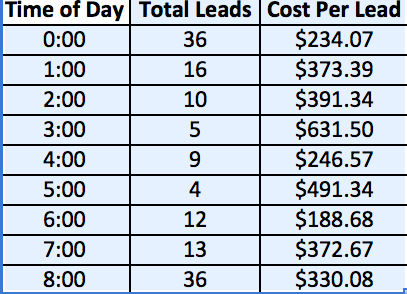Over the last few months, I have been working with my lead generation clients to help improve their click to lead rates. As we rolled out new landing pages and saw lead volume increase significantly, I started to ask the question: Are we just driving up the quantity of leads, or are we also improving the quality of those leads, which in return, will be more likely to convert into clients or sales?
Click to lead rate is one of the most important, yet one of the most misleading statistics we pay attention to as pay-per-click professionals. Today, we are going to examine factors that influence click to lead rate, how higher click to lead rates and increased lead volume can bring more clients, and why less leads and a worse click to lead rate can sometimes lead to more clients and increased profitability.
Factors That Affect Click to Lead Rate
In order to understand click to lead rate, we first have to understand the underlying factors that influence it. Click to lead rate is not just a matter of how well a site converts traffic, but how qualified the traffic being driven to that site is, and the behind the scene process that takes place to try and convert those leads to clients or sales.
Having the right keywords and ad copy directly influences lead quality. Less targeted, more general keywords tend to drive a lot of clicks, but are less likely to convert into a sale. A user who types in a general keyword is usually in research mode and not ready to enter into a sales process. A poorly written ad can bring in prospects that have different expectations or needs than your service or product offers, which in turns lowers conversion rate from lead to customer.
Time of day is also critically important. Often, prospects submit lead forms outside normal business hours. When the sales department tries to contact the prospect later in the day, they can’t reach them or the prospect is no longer interested. The example below shows how cost per lead varies throughout the overnight hours.
Case Study#1: New Landing Pages Increases Leads and Clients
A client I’ve been working with created new landing pages that resulted in a 25% increase in form completions. Why did their form completion rate increase? The completion rate increased because their pages are more targeted towards the services and programs they offer. When landing page content exactly matches user intent, click to lead rates are bound to increase. What we also learned is that the conversion rate from lead to client also increased.
This particular client focuses exclusively on search, which brings a naturally higher conversion rate. The client also has a strong sales process. Within a few minutes of a form being completed, someone from the sales department is in contact with the prospect. Targeted landing pages and quick response to form fills results in a strong rate of conversion from lead to sale.
Case Study#2: Lower Click to Lead Increases Account Performance
Display advertising has an inherently lower click to lead rate than search. The reason for this is users are not actively searching for a product or service. However, a lower conversion rate is not necessarily bad if a more qualified lead is being generated.
A client of mine receives more leads from the GDN than from search. In the last 6 months, GDN leads have more than doubled. However, as these leads make it through the sales funnel, we found that a good portion of the leads were from prospects seeking business services the client does not offer. We excluded the sites generating these non-relevant leads and conversion rate plummeted. This was initially a big cause for concern. However, after further analysis, we saw that lead to client conversion rate increased 13% and the cost to obtain a customer dropped by $1K per client.
The example below highlights from month to month shows the improvement in overall business metrics as a result of excluding converting sites.
This is a prime example of how click to lead rates can be deceptive. The higher click to lead rate in February did not bring in more clients. In fact, as lead volume increased, the amount of clients from those leads decreased. Consequently, the cost to obtain a client spiked to a point of making the paid search program unprofitable.
Conclusion
My thoughts about click to lead and conversion rate have evolved. I used to look at click to lead as the main indicator of how well my client’s paid search program was performing. I have now come to believe that the most important metric for lead generation is the conversion rate (the rate at which leads are converting to clients or sales). After all, a lead is nothing but meaningless information if it doesn’t turn into new business!





